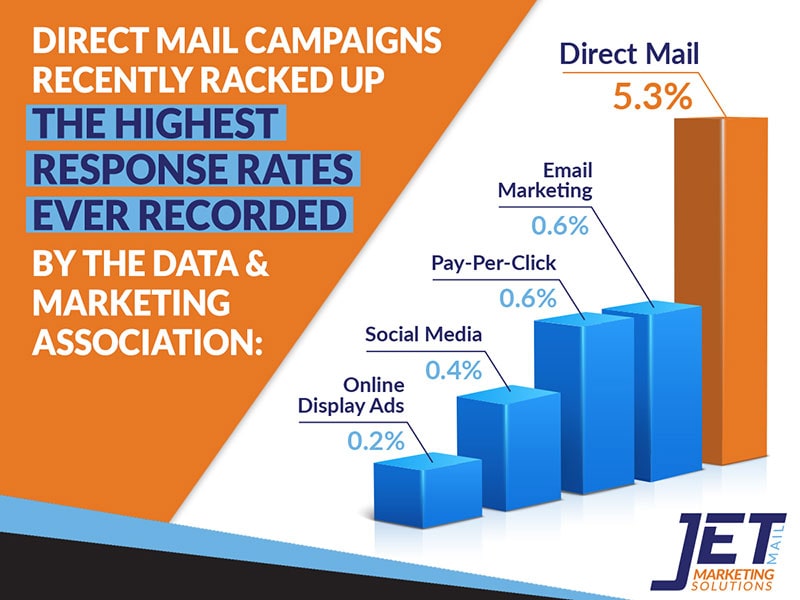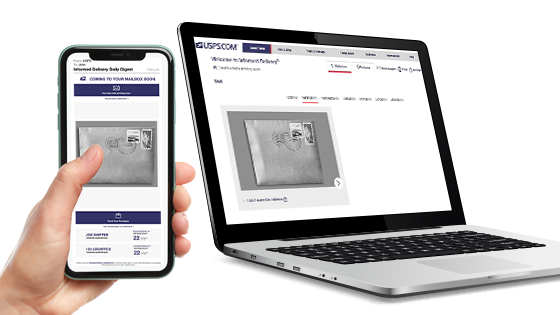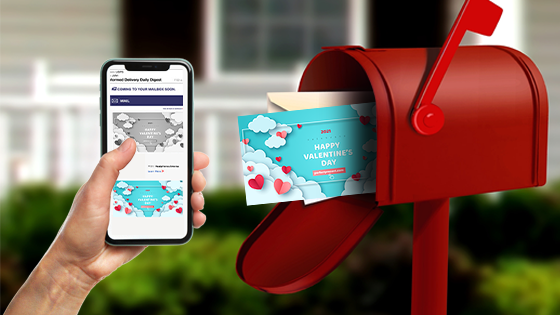While direct mail is technically referred to as a “traditional marketing channel,” modern direct mail is anything but traditional.
Modern direct mail is personalized, data-driven and fast. It’s also extremely effective at building brand awareness, boosting conversions and generating new business.
In this guide, you’ll find an all-encompassing rundown of modern direct mail, including:
- Why direct mail is so effective.
- How to incorporate direct mail as part of an integrated marketing strategy.
- The importance of data in direct mail campaigns.
- Real-world examples of modern direct mail campaigns that convert.
How Effective is Direct Mail in 2022?
The hype around direct mail may ebb and flow as new communication channels come and go, but its effectiveness has remained constant.
There was a time when everyone thought email would kill direct mail. Then everyone thought that social media would kill both.
As it turned out, there’s plenty of room for multiple communication channels in this world, but direct mail continually rises to the top in terms of effectiveness.

So, what makes direct mail so effective?
To start, up to 90% of mail is opened, compared to the average email open rate of 20%.
Why are the open rates of direct mail so high?
- A mailbox isn’t as inundated as an inbox.
- Direct mail recipients don’t use ad blockers like nearly half of internet users do.
- Messages don’t get lost in the clutter of a social media feed or ad-infested website.
- With an email, you’re limited to approximately nine words in the subject line.
- 70% of consumers view direct mail as more personal than intrusive online interactions.
Additionally, direct mail is actually preferred by audiences across the board–even millennials. In fact, a 2021 USPS study found 60% of millennials feel the information in their direct mail is more useful than email, with 80% looking forward to what they receive in the mail each day.
And when direct mail campaigns are personalized, response rates skyrocket.
By adding just the first and last name of the recipient to a direct mail piece, response rates can increase by 135%. When personalization goes beyond the first and last name variable, response rates increase even more.
The best part? Personalizing direct mail campaigns is easier than you might think. Sending personalized mailers to 100,000 recipients doesn’t require 100,000 different files. Advanced digital printing technology such as variable data printing allows for the personalization of every mail piece in a single print run without delaying production time. Text, colors and images can easily be switched out from one mail piece to the next using advanced data processing software and a modern digital printing press.
Nearly every part of a direct mail piece can (and should) be personalized, including:
- Names.
- Messages.
- Promotions or special offers.
- Images and logos.
- URLs and QR codes.
- Colors and text.
Want to see the difference personalization makes?
The postcard on the left has a generic, one size fits all message addressed to “Current Resident.” The postcard on the right pulls in the recipient’s name, address, cost savings and an image of their local branch.

As a stand-alone communications channel, direct mail is a conversion-boosting powerhouse. And when strategically blended with digital marketing efforts, performance across all channels is elevated.
Direct Mail as Part of an Integrated Marketing Strategy
Too many marketing strategies rely solely on digital channels like social media and email. While digital channels play an important role in any marketing strategy, target audiences are often saturated with the digital noise of online ads and email blitzes.
Pairing digital marketing efforts with direct mail campaigns creates multiple touchpoints from a variety of communication channels, helping your business stay top of mind and convert more customers. It's also an easy way to collect data from your target audience, enabling you to personalize their customer journey and create one-to-one connections that convert leads into customers (we’ll dive deeper into data in the next section).
Here are three ways Jet Mail customers use direct mail as part of their integrated marketing strategy:
- Add special offers to mail pieces that direct recipients to claim an offer online. This ensures the mail piece is retained and reminds the recipient to redeem their special offer.
- Example: A code for a discount or an invite to an exclusive event.
- Bonus: To claim the offer, recipients must first input data.
- Supplement social media campaigns with a link to order free samples or marketing collateral.
- Example: Instead of saying “Contact Us” in social postings or paid advertisements, use CTAs offering a “Complimentary Free Sample” or “Complimentary Product Information Kit.”
- Bonus: Collect valuable customer data from the free sample or collateral request form.
- Trigger product or service information kits to send to customers who engage with email offers or as part of your lead scoring strategy.
- Example: When a current customer clicks on an email about a new service or product, send a personalized mailer with additional information.
- Bonus: Using data from your CRM, show that your business cares about customers by supplementing the mailer with a personalized letter referencing their recent purchase history.
Speaking of additional touchpoints, did you know direct mail is the only communication channel that is both tangible and digital?
Informed Delivery by USPS provides a digital sneak peek of the mail that will be delivered that day. Subscribers to this free service from the USPS receive a preview of the day’s incoming mail through an app, daily email notifications or the USPS online dashboard. A standard Informed Delivery preview displays a black and white image of the mail.
 Businesses can then pair their direct mail campaigns with a digital touchpoint by replacing the scanned black and white image with full-color banner ads, images and links.
Businesses can then pair their direct mail campaigns with a digital touchpoint by replacing the scanned black and white image with full-color banner ads, images and links.
 Informed Delivery emails have an impressive average open rate of 68%. Businesses who supplement their direct mail campaigns with Informed Delivery experience several performance-boosting benefits, including an increase in response rates, website visits and conversion rates.
Informed Delivery emails have an impressive average open rate of 68%. Businesses who supplement their direct mail campaigns with Informed Delivery experience several performance-boosting benefits, including an increase in response rates, website visits and conversion rates.
>>>Learn More: 3 Tips for Using Informed Delivery as Part of Your Direct Mail Marketing Strategy
We’ve covered why direct mail is such a powerful marketing tool, but it's important to note that its power is diminished if the wrong message is delivered to the wrong audience.
Personalized direct mail campaigns allow you to speak to the unique needs of the individual recipient rather than blasting a “spray and pray” campaign with the same message to every recipient. After all, your business doesn't have a one-size-fits-all audience, so you shouldn’t have a one-size-fits-all message in your direct mail campaigns.
To personalize a direct mail campaign, you need data about your target audience. Fortunately, you may already have the data housed in your CRM.
Data-Driven Direct Mail
What data do you currently collect from prospects and existing customers?
The most effective direct mail campaigns personalize more than just the <FIRST NAME> variable. Remember, nearly any element of a mail piece can be personalized, so the more data you collect, the more you can hyper-target.
Try to collect as much data as possible, including:
- Geographic Data: Physical location, including county, town, zip code and even subdivision.
- Demographic Data: Gender, age, ethnicity, income, occupation, education level and home type.
- Behavioral Data: Buying patterns, habits and preferences.
- Psychographic Data: Interests, lifestyles, activities and values.
Not sure how to collect data? Struggling to get more information than just names and addresses?
Collecting data can be difficult. Consumers have become increasingly hesitant to share personal information. However, as mentioned in the previous section, integrated marketing campaigns can be an easy way to circumvent consumers’ aversion to sharing their information since they are receiving something tangible in return (such as a free sample or product information kit).
If you have limited or no data, there are workarounds such as:
- Every Door Direct Mail (EDDM): EDDM utilizes USPS mailing route information so you can have access to large geographic swathes of potential customers. This is ideal for home services companies supplying a general product or service that virtually everyone needs at some point, and works well to start building up your contact base.
- Mailing Lists: For home service businesses that have a more niche audience, a quick and easy way to target new customers is through acquiring business, consumer and residential mailing lists. Mailing lists can be targeted for detailed geographic and demographic information, as well as industry criteria.
>>>Learn More: How the home service industry leverages data to boost direct mail response rates.
Need inspiration for your next direct mail campaign? Here are five real-world examples of how Jet Mail customers use data to personalize their direct mail campaigns.
1. Service Reminders
From air conditioning to automotive services, direct mail campaigns should tailor offers to customers based on their last service date. Maintaining clean, accurate and up-to-date data is required for this type of campaign.
>>>Learn More: How the home service industry uses data to personalize direct mail campaigns.
2. Industry Changes
With interest rates on the rise, businesses in the finance sector can reach out to customers who are prime candidates for locking in today’s interest rates before they go up. Speed is critical in this scenario, so you’ll want to ensure your message is seen before the competition.
>>>Learn More: How to get your message in front of customers first.
3. Business Announcements
Be sure to update customers about new services or products. For example, if you now offer all-natural biodegradable product options, send a mailer to announce the new line of products with a discount tailored to the customer.
>>>Learn More: How to announce your new service or product offerings in competitive or saturated markets.
4. Upsell Opportunities
Send customers tailored suggestions for new products based on past purchases. For example, mail customers who recently purchased a home security system with an offer for a service and maintenance plan. Be sure to tailor images, too. Use images of senior citizens for mailers to retirees who tend to care about traveling and knowing their home is safe while away. Use images of families for mailers to parents since their priority is keeping their children safe.
>>>Learn More: The do’s and don’ts of personalizing your next direct mail campaign.
5. Customer Preferences
Hotel chains can personalize mailers with images from a customer’s favorite property – or even the view from the room they stayed in most recently. They can also send promotions based on demographic information. For example, send direct mail offers for mid-week stays to retirees and send summer vacation packages to families.
>>>Learn More: Implement personalization into your 2022 direct mail marketing strategy.
Feeling inspired? We hope you are! But before deploying your next direct mail campaign, be sure to read these top tips from our team of direct mail experts.
5 Tips for Successful Direct Mail Campaigns
1. Leverage the power of personalization.
We’ve mentioned it several times, but the power of personalization can’t be emphasized enough.
93% of businesses saw an increase in revenue when they focused on an advanced personalization strategy. In order for your content to convert, it has to be valuable to your audience. With personalization, you can ensure your audience is only presented with relevant content, which makes them feel like you understand them. In other words, personalization works because it is, well, personal.
2. Define your audience(s).
You don’t have a one-size-fits-all audience, so your direct mail campaigns shouldn’t speak to a single audience. Clearly defining your target audience(s) helps your business hyper-target resources and messaging towards specific groups. Segment your data into subsets based on geographic, demographic, behavioral and psychographic data. Then, personalize messages and offers according to the pain points of each subset.
3. Properly maintain mailing lists.
Good, clean and accurate data is critical to the success of any direct mail campaign. Frequent focus on data hygiene and data scrubbing ensures the information you have on your audience is correct. Plus, it helps to avoid paying for mail sent to duplicate or incorrect contacts. Given the importance of data maintenance, you’ll want to ensure your direct mail vendor has extensive experience managing complex data, appending mailing lists and keeping current with National Change of Address (NCOA) processing to optimize the ROI of each campaign.
4. Make your content solution-oriented and actionable.
You’ll want to avoid the old overused “just checking in” mailings with nothing specific to offer. The data from your CRM allows you to create an irresistible offer tailored to the preferences of the individual. For example, if a customer recently purchased a couch, a discount offer for a couch is a wasted mailing. An offer referencing their recent purchase that suggests matching end tables will have much more impact–especially if the offer is only valid for a limited time. Use data from your CRM to determine what your customers have already purchased, and what they’ll need or want next.
5. Test variables to optimize performance.
A frequently mentioned (and somewhat trite) direct mail best practice is to use vivid colors, attention-grabbing images, bolded text and oversized envelopes to get noticed. But which colors? What text do you bold? What images work best? The answer to these questions is dependent on your industry, audience and brand. What works for one business may not resonate with the audience of another business.
Instead of guessing, test different variables during each campaign and use unique QR codes or personalized URL addresses (such as www.yourbusiness.com/customername) to track results and determine which variables performed best. From there, you can optimize the design and content of mail pieces based on data-driven insights.
Partner with the Direct Mail Experts at Jet Mail
Since 1993, the experts at Jet Mail have helped businesses deliver attention-grabbing direct mail campaigns that boost ROI and generate new revenue. Our in-house print, mail and fulfillment capabilities–including our on-site USPS facility–result in high-quality, fast and effective direct mail campaigns. Learn how Jet Mail can amplify the performance of your next direct mail campaign by contacting our team of experts today.




COMMENTS